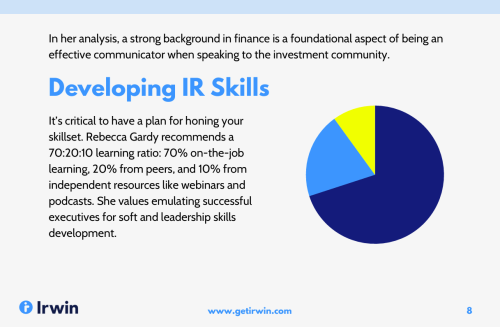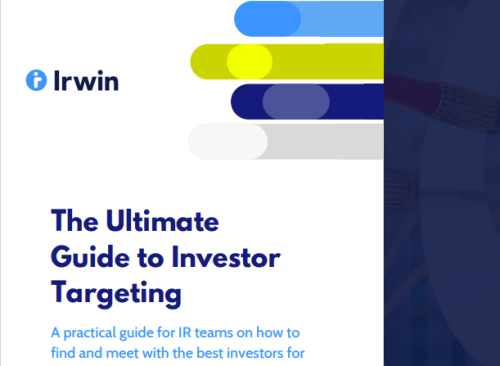Europe’s new shareholder disclosure regime has got off to a troubled start with requests for information experiencing delays and technical issues, according to a variety of market participants.
The new rules, introduced as part of the Shareholder Rights Directive II (SRD II), became effective on September 3. They attempt to increase transparency around share ownership by placing obligations on intermediaries in the investment chain to disclose information.
But the rules are being applied differently across European markets, sowing confusion and stalling the exchange of data. In addition, some intermediaries do not yet have systems in place that allow them to quickly process disclosure requests.
‘The results are currently not convincing,’ says Markus Becker, director of stock surveillance and corporate access at EQS Group. ‘It takes too long and it doesn’t work well enough.’
‘The idea was to create more transparency; I think it’s fair to say that so far in many cases it’s done the opposite,’ says Mark Simms, founder and CEO of CMi2i, a shareholder ID firm.
Share ownership is often masked by the layers of custodians, banks and brokers that hold securities on behalf of clients. SRD II sought to address this by giving companies the right to identify their shareholders.
The new system is supposed to work this way: an issuer or agent acting on its behalf sends a shareholder ID request to the top of the investment chain. The request is then passed down through the layers of intermediaries. As shareholdings are identified that meet national disclosure thresholds, the information is transmitted back to the firm that started the inquiry.
When implementing the directive, countries could add a minimum disclosure threshold in their national legislation of up to 0.5 percent of issued shares, although many opted to include no threshold.
SRD II requires intermediaries to pass information down the chain on the same business day, and to make any disclosures by the end of the following business day.
Under the laws implemented by EU member states, there may be significant penalties and fines for non-compliance with the rules. For example, securities may lose their voting rights and see dividend payments withheld.
Lack of harmonization
One of the main challenges for the new rules is the different ways they are being implemented across Europe. A principal issue, according to firms trying to process ID requests, is the lack of a shared definition of ‘shareholder’.
‘In some markets, that’s the nominee on the register,’ explains Demi Derem, general manager for international investor communication solutions at Broadridge. ‘In others, it means the underlying beneficial owner, so that’s caused an unlevel playing field.’
There’s also no shared understanding of whether certain securities, such as depositary receipts, are covered by the disclosure rules. Adding to the complexity, some European countries have included unique data requirements in their national legislation.
Data fields governed by local state law are ‘causing problems because not all custodians hold that level of information,’ says Derem. ‘The dust is still settling around local market practice and how intermediaries will harmonize how they send and receive requests.’
Technological issues have also bugged the roll-out of the disclosure regime. In the run-up to implementation, an industry working group selected a financial messaging standard to share information. A common approach was needed to ensure requests could be processed in a timely and machine-readable format. But many intermediaries have not got their internal systems ready in time.
Currently, issuers and their agents ‘don’t have very good assurance’ that ‘the intermediary at the front of the chain or someone one or two steps along it’ will be able to pass on a request, says Andrew Myers, head of product at Proxymity, a provider of SRD II compliance services.
Given their lack of readiness, some intermediaries are passing on information through other means, such as emails. Third parties then need to manually collect and organize the data.
‘I suspect everyone’s doing their best to be compliant and deliver information in a timely fashion,’ says Derem. ‘In reality, however, because of the end-to-end process flow and the chain of intermediaries that sit between the issuer and the shareholder, I wouldn’t be surprised if the industry is having problems meeting its timeliness obligations.’
Myers says there has been some improvement in responses to disclosure requests, especially over the last two months. A lot of the larger custodians have now either built their own solutions or hired a third party to manage the process, he says, but there is still ‘some way to go’ for all intermediaries to be ready.
As the disclosure regime is not functioning as intended, issuer agents are in some cases bypassing the first intermediary and directly contacting firms further down the investment chain. This is creating additional complexity for intermediaries already struggling with the new system, according to some market participants spoken to by IR Magazine.
Responding to this view, Simms says: ‘For us as an issuer agent, it’s a necessity currently with the varying levels of readiness to ensure we get full information for the issuer. As we understand it, SRD II does allow for direct disclosure requests to intermediaries. We believe this will be required for verification purposes and at least until all parts of the custody chain are on the same mechanism.’
The European financial services industry flagged its unreadiness for the September 3 deadline twice last year. In April, a group of industry associations wrote to the European Commission (EC) calling for a one-year delay to the implementation date, citing a lack of market readiness, which they said had been made worse by the Covid-19 outbreak.
Then, at the start of September, the same group requested a transition period during which regulators would take a restrained approach to fines and other penalties resulting from non-compliance with SRD II. While there has been no official response, it’s understood this request was not granted. The EC did not respond to a request for comment for this story.
High hopes
Expectations were high that SRD II could lead to more transparency in Germany. The country has a high number of bearer shares – where ownership can be transferred without making changes to the share register – making it hard to identify the underlying owners. Half of DAX companies have bearer shares, while the figure for smaller issuers is around 70 percent.
‘I’m trying to do some expectation management,’ says Becker, who mainly works with German clients. ‘The whole industry knows [the new disclosure rules] don’t work. If you have a particular part of the custodian chain you are interested [in], we can try to focus on that area. Otherwise you will not get a meaningful result in a timely fashion.
‘I thought this would bring a new dynamic to the system and would make up for some major transparency problems. In Germany it will take half a year until we have better results.’
SRD II has brought some improvements in markets where there wasn’t previously a good disclosure regime, says Simms. Italy used to have ‘a basically non-existent disclosure law’ and SRD II has ‘created a mechanism where the compliance departments at the custody level will co-operate,’ he says.
But other markets have seen transparency go ‘backwards’ under SRD II, he adds: ‘The thresholds have given certain custodians who used to co-operate the excuse not to be quite as co-operative as they were under the previous disclosure laws.’
While SRD II has the potential to increase shareholder transparency, the information it provides may not be that useful to IR teams. The directive helps companies identify beneficial shareholders – the ultimate owners of shares who hold the voting rights. IR professionals, however, tend to be more interested in who manages the shares, which may be a different source.
For example, a shareholder ID request using SRD II may show that Norges Bank Investment Management owns 5 mn shares in a company, says Mark Robinson, head of EMEA issuer services at RD:IR. But it won’t reveal whether some of the investment decisions are being taken by an external manager.
Robinson predicts the future will be a hybrid model where shareholder ID firms make use of traditional disclosure requests and SRD II inquiries to get the most insight into the shareholder base. He points out that in some markets traditional disclosure methods can be expensive and take many weeks to complete. In such a case, an SRD II inquiry could help cut costs and speed up the process.
A potential long-term issue, however, is that some custodians may shut down the teams that provide disclosure information because now ID requests can be outsourced and run using SRD II, says Robinson. If they close, that could make it harder to track down the information IR teams are looking for.
‘These teams have been invaluable sources of information and able to answer direct queries, and it is unclear whether this link back to the custodian will remain if the data processing is outsourced,’ he says.
Several shareholder ID firms spoken to by IR Magazine say a better option to increase shareholder transparency in Europe would have been to replicate the Section 793 powers available to UK companies.
Section 793 allows a company, or an agent acting on its behalf, to request information from intermediaries about anyone who has an ‘interest’ in the issuer’s shares. It allows companies to unearth both beneficial owners and asset managers with an investment mandate.
The UK rule has been replicated in other markets, such as South Africa and Australia, showing it can be exported successfully, says Patrick Mitchell, co-founder and managing partner at Investor Update.










